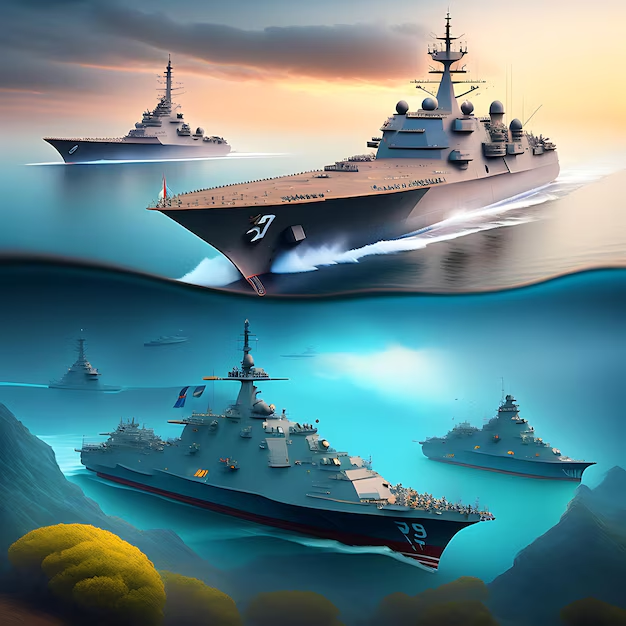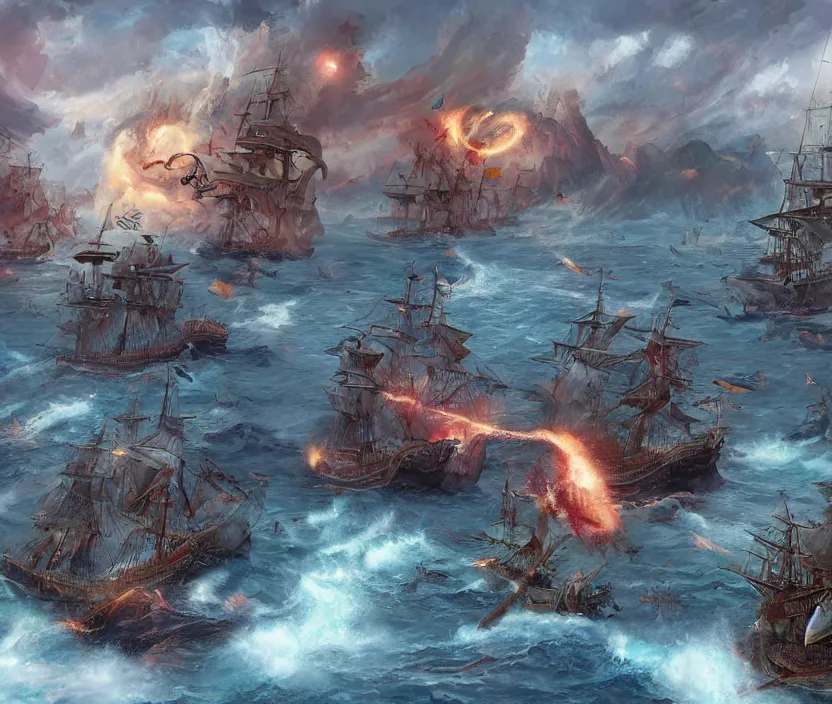The Future of Naval Warfare: How ‘AI Agents’ Can Help Navy Commanders Win the Fight

Introduction
As modern warfare rapidly evolves with the rise of digital and unmanned systems, Artificial Intelligence (AI) is no longer a concept of the future—it’s a critical tool on today’s and tomorrow’s battlefield. Among the most transformative innovations are AI agents: autonomous or semi-autonomous software systems that can analyze data, make decisions, and take actions in dynamic environments.
In the context of naval operations, AI agents can become a decisive force multiplier, helping commanders navigate complex decision-making, optimize mission planning, coordinate assets, and counter threats at a speed and scale that humans alone cannot match.
As peer competitors like China and Russia continue to develop and deploy advanced maritime capabilities, leveraging AI agents may be key to ensuring information dominance, fleet survivability, and tactical superiority in contested waters.
What Are AI Agents?
AI agents are systems or entities that:
- Perceive their environment through sensors or data streams
- Process and interpret that data using algorithms, models, and machine learning
- Make decisions or recommendations based on objectives and conditions
- Act autonomously or assist humans to execute tasks
Types of AI agents include:
- Autonomous maritime drones
- Decision support systems
- Cognitive assistants
- Swarm coordination platforms
- Cyber defense bots
Naval Warfare in the Age of Complexity
Naval commanders today face:
- Multi-domain threats: air, surface, sub-surface, cyber, and space
- Vast operational theaters across oceans
- Overwhelming volumes of sensor and intelligence data
- Highly dynamic scenarios requiring rapid decisions
The speed and complexity of modern naval engagements have outpaced traditional human-led command and control. AI agents can bridge this gap by enabling real-time processing, predictive analytics, and decision optimization.

Key Roles of AI Agents in Naval Operations
1. Battlefield Decision Support
AI agents can serve as decision aides, analyzing tactical and strategic options based on real-time battlefield data. They can:
- Recommend courses of action (COA)
- Simulate outcomes of potential engagements
- Identify high-priority threats
- Optimize weapons deployment
This enables commanders to respond faster and more accurately in high-pressure situations.
2. Sensor Fusion and Intelligence Analysis
Modern naval ships are equipped with:
- RADAR, SONAR, EO/IR sensors
- Satellite feeds
- Signal intercepts (ELINT/SIGINT)
- AIS (Automatic Identification Systems)
AI agents can fuse this disparate data, filter noise, and highlight anomalies or threats, offering situational awareness that is timely and actionable.
3. Autonomous Asset Management
Navies are increasingly deploying:
- Unmanned Surface Vessels (USVs)
- Unmanned Underwater Vehicles (UUVs)
- Autonomous drones
AI agents can:
- Coordinate these assets in swarms or formations
- Manage their fuel, maintenance, and mission status
- Assign them to reconnaissance, anti-submarine warfare (ASW), mine countermeasures, or decoy roles
- Reduce human workload and increase coverage area
4. Cybersecurity and Digital Defense
Naval systems are highly vulnerable to:
- Jamming
- Spoofing
- Hacking and malware
AI agents trained in cyber behavior patterns can:
- Monitor network traffic in real time
- Detect and neutralize intrusions
- Automatically isolate compromised systems
- Adapt to new forms of cyberattacks without human input
5. Logistics and Sustainment
AI can help streamline:
- Fleet maintenance scheduling
- Fuel and ammunition management
- Predictive part failure analytics
- Supply chain resilience
This ensures operational readiness and prolongs mission effectiveness, especially in contested logistics environments like the Indo-Pacific.
6. Wargaming and Training Simulation
AI-driven agents can simulate:
- Opposition force behavior
- Combat scenarios with millions of variables
- Asymmetric and cyber conflicts
This helps commanders and crews rehearse complex scenarios in synthetic environments, preparing them for real-world uncertainties.
7. Electronic Warfare (EW) Optimization
In contested electromagnetic environments, AI agents can:
- Analyze jamming signals
- Reconfigure EW suites dynamically
- Manage electromagnetic spectrum usage in real time
- Enhance stealth and deception tactics
Case Studies and Prototypes
⚓ DARPA’s Sea Hunter
An autonomous anti-submarine vessel capable of operating unmanned for months, using AI for navigation, threat detection, and mission planning.
⚓ Project Overmatch (U.S. Navy)
A classified initiative aiming to connect ships, aircraft, and sensors via AI-enhanced battle networks—a key enabler of Joint All-Domain Command and Control (JADC2).
⚓ Task Force 59 (U.S. 5th Fleet)
Operational deployment of AI-controlled drones and surface vehicles in the Middle East, integrating real-time sensor data into operational planning.
Challenges and Ethical Concerns
Despite immense potential, the use of AI agents in naval warfare raises critical challenges:
⚠️ Trust and Accountability
- How much autonomy should be given to an AI agent?
- Who is responsible if an autonomous system misfires or misidentifies?
⚠️ Data Bias and Training Gaps
- Poor-quality or biased data can lead to flawed decisions.
- AI must be rigorously trained in realistic maritime environments.
⚠️ Adversarial Exploitation
- Enemy forces may attempt to deceive or hack AI agents, causing them to malfunction.
⚠️ Rules of Engagement and Legal Constraints
- International law may not fully address AI-led warfare.
- Ensuring compliance with law of armed conflict (LOAC) and ethical guidelines is critical.
Future Outlook: AI as a Naval Teammate, Not a Replacement
AI agents are not intended to replace human commanders, but to augment their capabilities, absorb routine cognitive loads, and present smarter, faster, data-backed options.
In future maritime conflicts, victory may not depend on who has more ships—but on who can process data and act decisively in the shortest time. This is the realm where AI agents can redefine naval power projection.

Conclusion
As adversaries modernize and the global maritime environment grows increasingly complex, AI agents stand to become the backbone of next-generation naval warfare. By enhancing decision-making, integrating platforms, and enabling autonomous capabilities, AI will empower naval commanders to “out-think, out-maneuver, and out-fight” their enemies.
However, this power comes with responsibilities: ensuring human control, ethical governance, and technological robustness. If developed and deployed wisely, AI agents may be the key to maritime dominance in the digital age—where speed, data, and intelligence win the fight.




